Abstract
In times of being invaded and exiled, reclaiming one’s land and defending one’s independence is a common response that is just, meanwhile defaming the oppressor and resisting the oppression too is a normal reaction that is natural.
However, if the circumstances are such that demand a shift in the manner of resistance where an unprecedented greater value of humanity and its prosperity is awaiting to be embraced soon before its disappearance, then isn’t it wiser to adopt and subscribe to the greater value by avoiding petty temporary gains?
Unlike other countries or nations struggling for their rights and freedom, Tibet and its cause for genuine autonomy hold a unique value that surpasses all other movements and struggles. The whole Tibet movement, support, and international engagement are inextricably woven with the philosophy of the middle-way approach i.e., peace and nonviolence.
Yet, unfortunately, if our own fellow Tibetans are not fully convinced with the philosophy and its significance, then how could we expect a genuine effective meaningful movement and engagement from our side as well as support from others?
It is true that we do support the policy of the Middle-Way approach, unanimously accepted by the majority of Tibetans inside and outside Tibet, but having a genuine conviction of the policy seems far behind lacking its fundamental principles, and requiring an immediate operation.
Therefore, reviving the cause of Tibet and restoring the faith in the Middle-Way of approach seems to be a vital need of the hour.
The Chronology
In earlier times, human society was generally isolated and self-sufficient without any knowledge about its neighboring region, but gradually evolved and thrived in harmony with nature and in contentment. With the span of time, the growing number of human communities and human greed led to their encounter with each other, thereby the simple idea of defeating a so-called enemy or neighbor, considering it as victory to one’s self has, unfortunately, become the trend. It was quite acceptable during the time when only a small bunch of human communities exist and their degree of violence was of limited casualties to people and the environment.
However, in these times of modernization and globalization, the whole picture of human society has turned into one global community. The entire world has now become heavily interdependent on economic and environmental relations. The earlier view of defeat and victory changed into the reality of present times that the defeat of one’s enemy or neighbor is actually the destruction of one’s own self and the community. Currently, the prosperity of the whole east and west, south and north side of the world depends on each other with common interest becoming a priority over national interest. The actual reality is over 7.7 billion humans irrespective of different nationalities, races, religions or colors exist as one human family among the limitless sentient beings residing on this planet Earth.
During the course of modern history (the emergence of Capitalism and the Industrial Revolution), particularly in the past few centuries, imperialism and colonialism have spread beyond its limit exploiting many innocent communities by force and by political diplomacy turning the whole era into an atmosphere of unrest, bloodshed, and violence. The two World Wars and other small wars and conflicts have affected humankind with the notion that disagreement and disobedience must be encountered and tackled with force and weapons. By overlooking the casualties and consequences caused by such, we humans continued to evolve blindly with this culture of violence of different forms. The result is crystal clear with an overwhelming crisis of emotion and morality among people in the community with constant unhappiness and instability around.
William Wordsworth has sadly written “The world is too much with us; late and soon, Getting and spending, we lay waste our powers. Little we see in Nature that is ours. We have given our hearts away, a sordid boon!”
Sino-Tibet Conflict
As far as Tibet and China are concerned, historically speaking, despite occasional incidents of conflict and few cases of the clash, both countries had a deep positive relationship of spirituality with each other. Tibet was identified as the realm of Avalokiteshvara, while China was identified as the realm of Manjushree, the two highest figures in Tibetan Buddhism. In fact, there are a greater number of spiritual stories that celebrate Tibet and China as good neighbors than stories of political disputes that claim Tibet and China as the arch-enemy.
In the twentieth century, during the high time of conflict and war among nations, Tibet was far away isolated from the major part of the world living its own spiritual life, whereas China as one of the giants was struggling to find its own path towards prosperity. But unfortunately, driven and influenced by the prevailing idea of imperialism and colonialism, in such circumstances, Tibet as a victim with no proper defense and foreign diplomacy was brutally invaded and forced into obedience to the might of The People’s Republic of China (PRC) who came in disguise offering prosperity to the Tibetans in the name of liberation, finally occupied all over Tibet.
Eventually, with repression arises resistance. Mass protests against the People Liberation Army (PLA) and an uprising broke out on the 10th of March 1959 in Lhasa with high slogans chanting ‘Tibet is an independent country, Tibet belongs to Tibetans, and Chinese go back from Tibet’, followed by women empowered movement the Tibetan women’s uprising began on 12th of March 1959 a day after the initial uprising with same slogans against the brutal regime. Yet unfortunately, due to the unmatched resources of weaponry and artillery the legal voices against human rights violations were suppressed brutally while the illegal occupation of a free country was recognized internationally.
Following such tragedy Tibetans in exile under the leadership of His Holiness the 14th Dalai Lama after years of tyranny and turmoil, with great courage and determination seeking truth and justice through peaceful means and nonviolent methods, continued to resist the harsh policies enforced by the hardliners in Tibet, keeping in mind the resistance was against the Chinese government policies but not against Chinese people or the community.
After decades-long repression and exploitation under tremendous torture along with high-security surveillance, the unwavering spirit for Tibet’s freedom has time and again burst out with a number of massive (peaceful) revolts notably in the year 1987-89 and nationwide peaceful demonstrations in the year 2008 during Beijing Olympics in all three provinces of Tibet; U-Tsang, Kham & Amdo, followed with over 156 self-Immolations till date by all range of Tibetans; young, old, lay, monk, nuns, educated, illiterate, everyone burning themselves on fire as a form of protest which unveiled a clear indication that Tibetans inside Tibet are still being murdered and humiliated for basic fundamental rights and freedom. Unfortunately, with wrong views and false ideas about Socialism and Communism, PRC continued to suppress everyone or anything that came across their way of development, falling far away from being a socialist-communist country, ending rather as one of the worst forms of capitalism violating human rights and religious freedom. Sadly, Tibet had to suffer the ongoing genocide of their identity, language, religion, and culture which symbolizes the heart and mind of Tibet as a nation.
It is wise and in fact, the right thing His Holiness the 14th Dalai Lama has done with profound understanding and farsighted vision, later democratically voted by a majority of Tibetans and with the unanimous support of the Tibetan Parliament in-exile, transformed the Tibetan struggle from complete- independence (Separation from PRC point of view) to genuine-autonomy (Middle-Way from CTA point of view) which according to circumstances was the need of the hour. Right from the very day in exile, full of courage and a strong determination, keeping transparency and sincerity, Tibetans under the leadership of His Holiness the Dalai Lama had struggled for independence and urged the concerned world organizations time and again for support and engagement, but in spite, a couple of resolutions passed in the United Nations the dire situation of repression and genocide remained same inside Tibet. Until the 1970s the leadership of Tibetans in exile had tirelessly made each and every effort to restore independence and peace inside Tibet, yet the positive aspirations of truth were tested and challenged by all sorts of negative criticisms and misinformation, finally reached a point where no active support and solidarity to Tibet issue became the case. Meanwhile, Tibet’s identity was on the brink of its extinction due to the ongoing cultural revolution inside Tibet. Therefore, ultimately the only best way or viable alternative left to resolve the issue of Tibet and save its very identity was to have a meaningful dialogue with its counterpart China, moreover, the middle way of approach was indeed a vital requirement during this crucial time, and hence, without seeking any separation (independence) from China, provided Tibetans have the right and freedom of language, religion, and culture including environmental protection as per China’s own constitution, an unprecedented win-win policy of Middle way approach for Sino- Tibetan conflict was adopted.
Certainly, after its implementation, within a few years of struggle, a new era of hope and happiness arrived with an amendment in PRC policies opening the decades-long closed border and unbanning travel restrictions that led to the reunion of exiled Tibetans with Tibetans inside Tibet by which
Tibetans came to know about each other’s life, living, and the unwavering spirit for Tibet and its cause of preserving the language, religion, and culture. Eventually, the doubtful existence of the Central Tibetan Administration (CTA) in exile(India) was resolved to the best of its functioning, and also the case of foreign travel restriction on HHDL was immediately lifted by the host country, thereby gradually Tibet with its inner value of peaceful and nonviolent struggle received genuine support and encouragements from major countries of the world jointly agreed to the Middle-way of approach urging China time and again to engage in meaningful dialogue with His Holiness the 14th Dalai Lama in resolving the Sino-Tibetan conflict. Meanwhile, due to the adoption of these aforesaid values and principles, Tibet and Tibetans all around the world were much loved and respected by the host countries and their citizens, who considered Tibetans to be a model of compassion and warm-heartedness. Under this very policy of ‘Middle-way’, the exile Tibetan community too was able to sustain and thrive with the maximum facilities of education and health including rehabilitation settlements that hardly any exiled refugee community in the world has achieved so far.
The Fact and The Truth
Historically, Tibet was an independent country without any doubt about its past existence and independence, clearly mentioned in China’s own historical records as well as in many documents produced by both ancient and modern historians and experts. Meanwhile, the pain and suffering caused by the invasion in 1959 will remain fresh forever in the hearts of every Tibetan and one can hardly cure this chronic wound of injustice. However, the real cause of Tibet is the preservation of its language, religion, and culture. Hence, if the greater cause of preservation is to be facilitated sincerely, then compromising the smaller cause of ownership (power) or ruling seems to be worthwhile to pursue. In reality, Tibet and China have to live side by side as neighbors whereas ultimately it’s always better to remain in union with no conflict than to live in separation with unending disputes. Having said that, both countries should respect each other’s rights and freedom with mutual understanding and a good level of civility.
His Holiness the 14th Dalai Lama often mentioned during his public talks referring to the idea of “Oneness of Humanity” the first of his four-lifetime commitments. The concept of the ‘European Union’ which he considered to be one of the positive examples from the west where France and Germany despite being an arch enemy during the two world wars have eventually matured enough to understand the reality and transformed their dispute into dialogue for mutual common interests. Right after the inception of the European Union, the world didn’t witness any conflict or conventional war among the member states, instead, both countries are living peacefully with mutual respect while enjoying democracy and prosperity in and around since then.
Now after sixty-three years of China’s invasion, Tibetans (in exile) still carry the movement of resistance with full courage and strong determination. However, the purity of resistance has deteriorated to hateful comments, personal attacks, and a sense of rage against the Chinese, under emotional reasoning of considering China as the arch-enemy and protesting against anyone or anything of them to be the right path for Tibet, nullifying the actual reality of the situation. But that is not the case.
His Holiness during the 10th March uprising day commemoration in the year 1971 has stated (translated from Tibetan) “Whether Tibetans actually oppose Chinese Communists, but I cannot ever hate or averse Chinese people. For hatred or aversion is not a strength, but rather a weakness or defect opposite to strength. The Buddha’s teaching of ‘hate never overcomes hatred’ is not merely teaching in general but rather a statement of reality. Whatever result comes out of hatred can never prolong, in addition, it’s a gesture calling out for more conflict.” Further HHDL added “I myself do not believe in achieving things by hatred or aversion. But one belief I constantly have is that truth will win one day.”
It is legally just to resist and defend one’s own independence which symbolizes a nation’s sovereignty. Yet it is also an ethical obligation to strictly follow and put into practice one’s own values and principles which symbolize the greater human identity. Resistance, revolt, rebellion, defiance, protest, and confrontation are methods that are applicable in certain situations up to an extent, but if enforced and applied inappropriately and in a wrong manner beyond limits, the consequences inevitably would be damaging and fatal.
The internationally renowned Prof. Gene Sharp in his work ‘From Dictatorship to Democracy’ mentioned that “whatever the merits of the violent option, However, one point is clear. By placing confidence in violent means, one has chosen the very type of struggle with which the oppressors nearly always have the superiority.”
In Dhammapada it is said, “Enmity never ends through enmity, rather, enmity ends by non-enmity. This is the law of samsara, this is the eternal Dharma.”
Further, in Dhammapada, it is stated, “By causing pain to others, he who wishes for his own
happiness, being entangled by the bonds of enmity, he is never freed from the enemy.”
Ancient Nalanda master Shantideva stated in his popular book Bodhicaryavatara, “Those desiring to escape from suffering hasten right toward suffering. With the very desire for happiness, out of delusion, they destroy their own happiness as if it were an enemy.”
Furthermore in Bodhicaryavatara, Shantideva clearly mentioned “All those who are unhappy in the world are so as a result of their desire for their own happiness. All those who are happy in the world are so as a result of their desire for the happiness of others.”
The root value of Tibet is the precious dharma and its culture i.e. kindness and compassion which transformed our wrathful ancestors into faithful devotees. Sadly, the practice and implementation of the said principles are at high risk of disappearance with almost the majority of individuals actually being ignorant and deluded about the prime values and their greater role in ‘universal responsibility.
His Eminence professor Samdhong Rinpoche in the year 1993 during His Holiness’s Birthday celebration on the 7th of July stated that (transl. from Tib) “In the present scenario the prime obstacle in the cause of restoring the freedom of Tibet is not at all the political power of the government ruling China. The prime obstacles to the cause of Tibet are the prejudices, emotional attachments, and aversions within the minds of Tibetans, the intention of self-winning and another losing, anger towards the enemy, and the inability to develop the courage of renouncing violence permanently.”
With reference to the above statements, it is quite clear that somehow we Tibetans, whether out of ignorance or vengeance, have failed to maintain our cause truthfully and in honesty, lacking the crucial factor of compassion which is the pre-requirement for a Tibetan being a Buddhist. Rationally it’s also a straight contradiction where on one side Tibetans consider themselves as followers of the Buddha and keep faith in his noble doctrine, but on the other side when faced with real-life challenges, we turn our back on the very message of being compassionate.
It is saddening to know that unfortunately, a strong misconception is somehow flourishing among Tibetans particularly the younger ones labeling inner values like compassion and forgiveness as mere actions of higher beings thereby discouraging the very practice confining it only to saints and sages, and claiming such values are not practicable to ordinary humans limiting its subtle profound nature and its relevance. Similarly, it is more hurtful when a few so-called leaders and activists in our own community provoke and encourage others, particularly the immature younger ones, to step beyond old values and counter opponents with more aggression and aversion. Such confusion is obvious when the concerned people themselves are not fully convinced of the core values and principles.
His Holiness in a speech during the 7th annual meeting of the Tibetan Youth Congress (TYC) mentioned (transl. from Tib)“While we assert the current situation is critical and grave, but still if disorderly protest with violence, then additional severe situations are bound to happen. There is no way for us to use violence, but say if we try to do so, then such a response would simply amplify the grave situation instead of solving it.”
1. Significance
Venerable Master Gyaltsen Namdol in one of his books has mentioned (translated from Tibetan) “In general, the fundamental condition of the necessity for a peaceful and nonviolent approach is that every sentient being wanted happiness and does not want any suffering. And the cause of whatever happiness and suffering depend necessarily on the merit or demerit of an action. Directly or indirectly, there is no other way around it than to rely on a peaceful and nonviolent approach. And the truth of the definite reality of such non-deluded causal effect is that unless we correct ourselves by the antidote of demerit the cause of suffering and subdue aversion by merit which is the cause of happiness, till then whatever good or bad actions we accumulate will never get wasted and the result of such karmic actions will definitely occur. Also as per the delusion of this life’s occasional incidents or partial situations such as war victory over an enemy by violence, considering it as joy to the nation, or devoted and generous families sometimes experience bad fortune in life struggle, in reverse sinful and dishonest people experience good fortune. Influenced by such misconception, one should never lose faith in the karmic law of causality and due to its nature of difficulty one should never dislike or distance themselves from nonviolence. Through the unique application of altruism, the possibilities of numerous actions are available for one’s practice.
The significance of relying on this particular approach (Peace & Non-violence) is the unavailability of any other better viable option that suits the present circumstances while there are ample supporting reasons for that. More importantly, the Tibetan’s conviction on this method of approach shouldn’t be necessarily based only on the karmic effect of spirituality, politically it is also being recognized in constitutions of various countries as the only legitimate best solution in resolving issues of any kind. When one asks Tibetans to rely on a peaceful and nonviolent approach, it is not due to the one being narrow-minded, neither is short of any method nor is trying to appear wise and suddenly not at all being an opportunist fraud finding his way to profit. The method of the approach adopted by Tibetans in restoring the freedom of Tibet can be seen as an unprecedented inspiration of value and appreciation in the wider world that is far more extraordinary than methods and movements carried by other countries in gaining their rights and freedom.”
2. Conviction
His Eminence Prof. Samdhong Rinpoche in his valedictory speech during a session of the Tibetan Parliament (in exile) stated, (translated from Tibetan) “In order to achieve a meaningful goal, one must adopt a meaningful effort, for there will never be a favorable result (effect) out of an unfavorable cause.”
His Eminence in foreword to a book also stressed that (translated from Tibetan) “Avoiding violence to others is a necessary practice for every wise individual irrespective of whether one is a believer or a non-believer. All religions in general and particularly the followers of Buddhism, Theravada, or Mahayana, higher or lower individuals, must adhere to the practice of nonviolence. The Ten wholesome precepts avoiding harm to others is an ordinary training that must be defended by all laypeople and above. Yet, many of us Tibetans from centuries are considered to be followers of the Buddhist religion, but in reality, we are clearly witnessing the growing lay and ordained community who are yet to convince themselves of the method of peace and nonviolence. However much we boast of preserving and promoting ancient culture and Buddhist teachings but in actual society, the practice of the noble doctrine has not only deteriorated but the entire power or ownership of our snow land’s environment and its inhabitants fell under the tyranny of the Red Army which caused us to experience an unbearably high amount of suffering. Meanwhile, both the temporal and the spiritual tradition have been damaged beyond our thought, and such tragedy occurred only due to us Tibetans being not able to maintain our political cause according to the dharma, and the prime obstacle in restoring back the freedom of Tibet is the lack of genuine conviction on peaceful and nonviolent approach which is logically apparent.”
Tibetans around the world are known for the fact that their day starts with an homage to the Buddha and prayer for all sentient beings, while compassion and kindness are fundamentally the basic instinct. The valuable tradition of being kind-hearted even to the smallest insects considering them as equal to yourself by recognizing the simple fact that every sentient being wanted happiness and does not want to suffer. The practice of peace and nonviolence against any challenges faced in any kind and form, with an extraordinary spirit of courage and determination even in times of repression and genocide, and the strong advocacy on truth and justice for all irrespective of differences, are being acknowledged and appreciated by many around the world. Therefore, it is also an important test for the Tibetans in years to come to sustain the purity and ongoing legacy of the nonviolent movement.
The Real Issue
To elaborate candidly, His Eminence Prof. Samdhong Rinpoche in one of his interviews straightforwardly mentioned in a nutshell that “Tibet issue is not an issue of the struggle between political ideologies (which means Tibetans are not against the fundamental idea of socialism and communism), neither it is between nation and ethnicity, nor it is a struggle for political power. The Tibet issue is a struggle or difference between truth and falsehood, justice and injustice.
The real Tibet issue is not an issue of who should rule Tibet but rather it is an issue of how to facilitate the people of Tibet enabling them to perform their own universal responsibility i.e. to preserve, promote and disseminate the teachings of compassion and mind came from the Lord Buddha, provided Tibetans must have such freedom and rights to perform this duty.
Tibet issue is related to the whole world because the entirety of Buddhist tradition without any contamination is only available in the Tibetan language may it be from a lineage point of view or the availability of lay teachers or the availability of handing down right from the Buddha to the present teachers without breaking the lineage. The Buddha dharma, the Buddhist science, the Buddhist philosophy, and the Buddhist culture has now become commonly acceptable entity and there are millions of people benefited from them.
From an environmental point of view, Tibet is the roof of the world. And during the last decade or so people have been using the term ‘Third Pole’ to Tibet. The Ten great rivers including the Ganges and Brahmaputra flow to the whole of South-Asian regions where almost more than forty percent of people are dependent on these rivers actually originate from Tibet. Needless to say, from the point of view of the issue of global warming and the issue of climate change, the Tibetan plateau and its environment are one of the most important global issues that need to be tackled.
Apart from that, from a political point of view, for peace and stability in Asia, there need to be good relations between the two biggest nations India and China. Before 1951, Tibet was a kind of buffer zone through which the two big nations wouldn’t touch any border with each other. And since 1951 more than 3000 kilometers of the border is common between India and China, and most of these parts of borders are disputed borders consuming billions of dollars.
Finally, the Tibet movement and its endeavor to achieve genuine autonomy are until now of a nonviolent nature. Today the world is challenged by so many different kinds of violence, and if the nonviolent movements need to succeed and thrive, then the Tibet issue is vital from that point also.”
Ultimately the prime objective of the cause of Tibet as envisioned by His Holiness the 14th Dalai Lama is to transform Tibet into a center for peace (zone of peace) with freedom, welfare, democracy, and environmental preservation based on a peaceful and nonviolent approach for the benefit of Tibet and all its neighboring countries including the whole world. However, this could only manifest if the Tibet- China conflict is resolved through a mutually agreeable solution which also could only be possible through a meaningful dialogue based on trust and friendship.
It is said (Wikipedia) “Non-violence seeks friendship and understanding with the opponent. It does not seek to defeat the opponent. It is directed against evil systems, forces, oppressive policies, and unjust acts, but not against persons. Through reasoned compromise, both sides resolve the injustice with a plan of action.”
Mahatma Gandhi Ji has affirmed that “Nonviolence is a weapon of the strong. It is the greatest force at the disposal of mankind.”
His Holiness when asked by an interviewer “Can you in your heart love the Chinese and forgive them for their atrocities toward your people?”
HH replied – “If we utilize the human intellect, we can make many distinctions and categories. The Chinese, as human beings, are sentient beings; and furthermore, of course, they also want happiness, they also have the right to be happy. As neighbors, and in the future, we have to live side by side. So, in order to have a happy future, and to live harmoniously in the spirit of good neighborhoods, we must cultivate a basis of that—that is human compassion and human love. If we love the Chinese, they will alter their response. If we maintain hatred but expect something good from them, it’s impossible. So that’s one aspect. I do believe that. And in my daily prayer, I always pray for the Chinese, to reduce their anger, reduce their ignorance, reduce their hatred. They have some negative ambitions that must go away. And our ambition—that zone of peace —is reasonable and logical. So our ambition is positive. Their ambition is a little bit negative. In the meantime, it is their atrocity and their cruelty we cannot forgive—we must accept and realize these are negative. This must change, they must go. We have to have resistance to that.
Within me, there is some negative feeling and negative desire. This does not mean that I hate myself. We are one being, but within that being, there are so many different thoughts and so many actions. Some actions and thoughts are negative and harmful—this I must check, ultimately, for my own benefit. The Chinese must do the same. As beings, of course, they are nice; you must respect them, must love them. Meantime, their actions, some of their motivation, you must oppose. So once we oppose the Chinese action, and Chinese motivation, this doesn’t mean we are opposing the Chinese. When I oppose some of my thoughts, some of my actions, I am not opposing myself.”
The interviewer further asked, “Is nonviolence really a feasible strategy in this day and age?” HH replied “I think so. I think so.”
The interviewer again questioned, “Why?”
HH answered “Firstly, now the world is too interdependent: economically, or in terms of education, even from the viewpoint of tourism. Friendliness is a very important factor, and today, warfare is really too much of a danger. The power of destruction is unlimited. So, therefore, in spite of failure, everywhere, you always see peace and negotiation, and dialogue. I think humanity has learned many experiences this century. We are making some kind of conclusion: Warfare is something really destructive, so we must find some other alternative. And also, I think, in reality, there’s no clear-cut black and white. If it really was clear-cut, positive or negative, then to use destructive force to eliminate the negative perhaps would have some logic. But in reality, everything is mixed. Your neighbor is something like your leg, so if you destroy that, you destroy your own leg. If your enemy is completely separate and has no connection with you, then you can eliminate him, but today I think this has completely changed.”
Prof. Samdhong Rinpoche once said “Chinese authorities always try to destroy our religion and language as they believe that these are the root cause that separates Tibet from China. The prayers of most of the self-immolators were for the return of His Holiness to Tibet and the preservation of our unique culture and religion, therefore preserving Buddhism and understanding its true meaning, and promoting it by teaching it to the world is the greatest contribution one can give to Tibet and its people.”
So, to conclude this article with a noble wish of HHDL, let us hope for holistic compassionate humanity and a peaceful demilitarised weapon-free world.

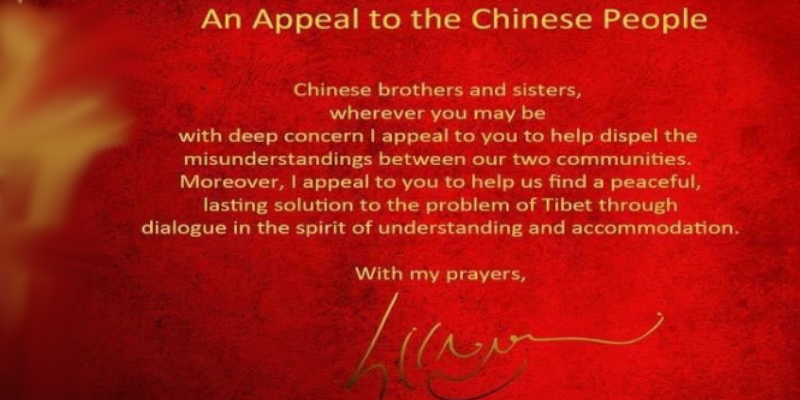
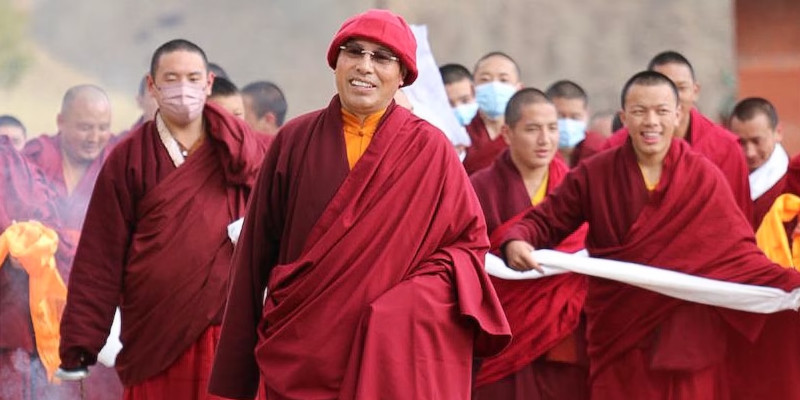
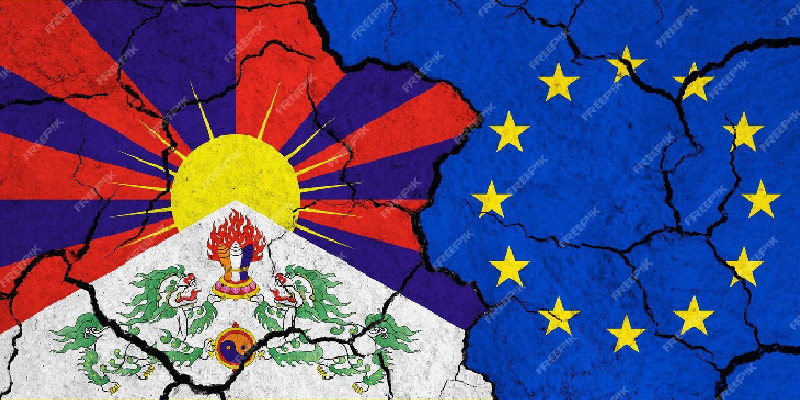
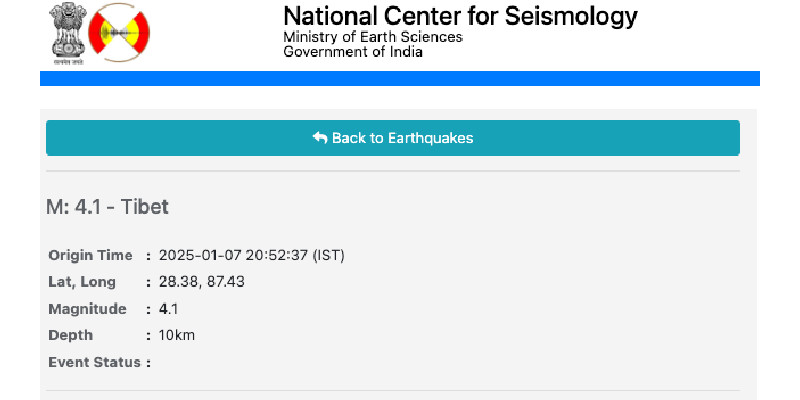
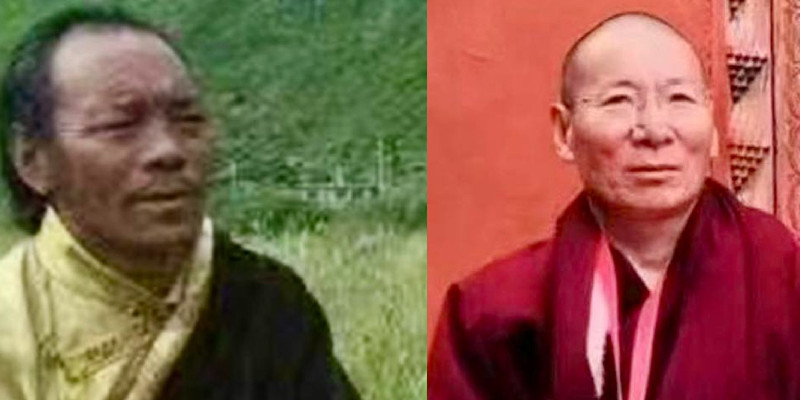
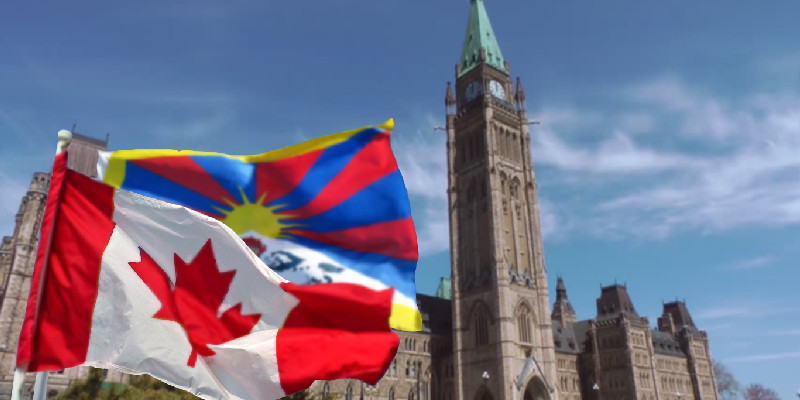
Leave a Reply